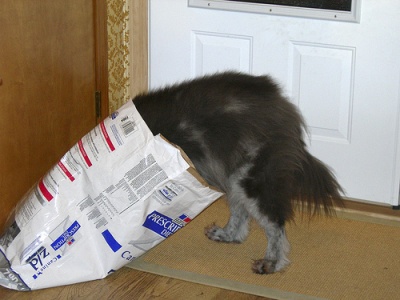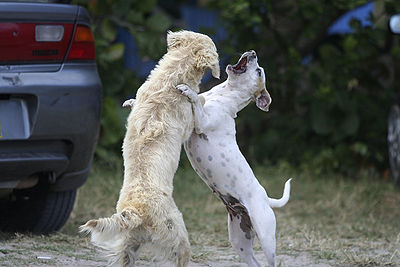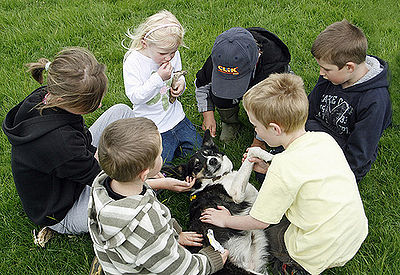
According to the ASPCA, food guarding or aggression is not the same as resource guarding. Most dogs become very excited around mealtime, watching you prepare their food. They hop around and even bark if you’re a bit slow.
But some dogs are fearful that their food will be taken away. Other dogs see you as a threat and will growl and even try to bite. These behaviors could have been caused by mistreatment at some point in the dog’s life.
Here are some tips that could help with food aggressive dogs. It’s best to involve the whole family in the training process.
- Have your dog sit or lie down and give the command to stay. Prepare the food is you haven’t done already and place it down. Use a special word to hold the dog in place and then a different word to release and eat.
- Don’t feed your dog until after you and your family have eaten. In the wild, the chief dog in the pack ate first and this can help tell your dog that you are in charge.
- Another way to discourage aggression is hand feeding your dog (as long as he doesn’t bite the hand that feeds him).
- Stand away from the dog while he’s eating. Gradually decrease the distance. If the dog growls, just stand where you are without making eye contact until he finishes.
- Place your dog’s dish down, keeping it empty. Wait a few seconds and then fill it.
- Keep a few morsels of your dog’s food in your hand. When he’s finished his meal, walk to him and offer the remaining food in your hand. He’ll learn to consider it an extra treat.
- Throw a couple of treats in the bowl when you walk past him. This will help to make your dog look forward to your approach.
- If your dog shows dog to dog food aggression, the simple solution with multiple dogs is to feed them in separate areas where they can’t reach each other.
- Don’t respond to your dog’s behavior with harsh words or punishment. These will only escalate the aggression.
If you’ve tried everything and none of it seems to be working, you shouldn’t allow the aggression to continue as it can place you and/or other family members in danger. Call in a professional dog trainer or animal behaviorist to help you. Make sure whomever you choose uses positive methods of training.
Related Articles



